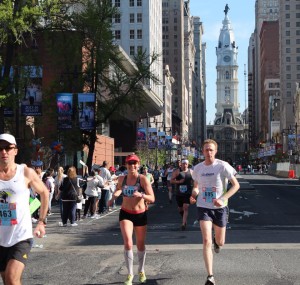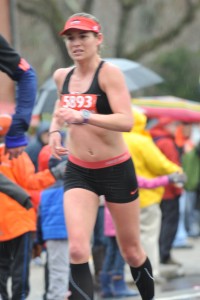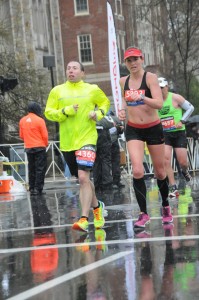Training for a sport or event always brings with it aches and pains. However, some aches and pains are part of the training process, while others should not be. Sometimes it’s hard to gauge pain and what to do about it. I am not a doctor, but I do have experience as an athlete and a coach in navigating these training waters, and want to bestow some tips for how to minimize pains, and also how to react to the different kinds you may encounter in training.
If you are training for something that is a challenge for you, there will be days and weeks of feeling sore, tired, perhaps with that “heavy leg” feel, or general muscle fatigue often associated with weight training, running or walking on challenging inclines, or moving really fast. These “growing pains” are not just saved for elite athletes or marathoners. Training for your very first 5K, trying to really run hard and race a 5K to the best of your ability, running your first trail race, blazing through a 400M race – if you are pushing yourself hard, whatever that means for you, you will certainly feel it.
Aches and pains can be challenging for runners to handle. For example, I know plenty of folks who will train through anything. They could have a fractured foot, and they will still be out there hammering out speed on the track. Others will refuse to take rest days and expect they can work through anything. Is this the best thing for a runner? Absolutely not. Then there are the runners who, the minute something feels uncomfortable, whine and refuse to navigate that uncomfortable feeling that is part of training. That runner will have a very hard time on race day when the going gets tough, because they refuse to adapt to the fatigue and uncomfortable feeling that usually comes with racing or completing a distance. There is, however, a happy medium between these two extremes. That runner is the one who will be most successful. It takes time, practice, and self-awareness to become that runner.
Here are a few tips that can help you push towards your goals while also being safe:
- Take recovery and active recovery days when sore. You cannot expect to go from 0-60 successfully. Your body needs time to be stressed and adapt. This cannot happen over night.
- Sore and achy muscles often feel better when stretched, foam rolled and iced. I often find that things loosen up if I go for an easy run or walk as active recovery. It may sound strange, but gentle exercise the day after a long or hard effort can speed up the recovery process.
- If something feels tender at the beginning of a run but feels better the longer you run, you can carefully continue your workout. If things don’t feel better or begin to feel worse, call your run quits.
- We all have a different history before tackling goals. Be aware of your body history and your potential strengths and weaknesses. We all have them. For example, I know my left IT band gets tight and hip flexibility can be an issue for me, so I am very much aware of my hips when I run – especially long runs and speed runs. I also do strength training to support and strengthen that specific weakness. Another runner may have other issues.
- There are some “injuries” many runners find they can train through (carefully!) and others they simply cannot. A break, fracture, tear, dislocation, tendonitis – those are all things that will and should sideline a runner from training. Some chronic “injuries” like runner’s knee, plantar fasciitis, IT band syndrome – can be carefully trained through – though you can expect some additional rest days, PT, and additional care. Always discuss your aches and pains with a doctor or physical therapist before self-diagnosing.
- There are very few injuries where rest, ice, compression and elevation are bad ideas. So when in doubt, follow those steps.
- It’s easy to panic the minute something feels unusual. Try not to have a meltdown, and remember that a few days off from training isn’t the end of the world. If it turns out your pain is something serious and your future goals need to be paused, do your best to follow medical advice and focus on being the best patient possible. Many athletes are horrible patients, and don’t help themselves get healthy ASAP. If you have a bone issue, talk to your doctor about your diet, and how you can best kick your bone density up and fuel your healing process. If you can still train without impact, be proactive about training in different ways – which will certainly help your sanity without hurting your recovery.
- Have a network of doctors, physical therapists and perhaps trainers (running coach and/or personal trainer) who can guide you and be your support system. Only work with folks you really trust. Having that “team” behind you will certainly give you what you need to safely achieve your goals.
Training is hard. It’s not for the weak – physically or mentally. It will bring with it aches, pains, achievements and milestones. Hard work pays off. Just make sure you are honest with your body, goals, and how you plan to safely get there. Best of luck for an awesome season! – Corky









